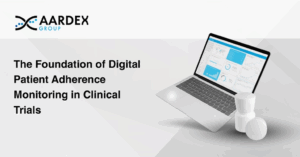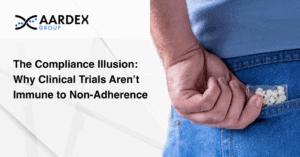The economic model that has underpinned the development of drug products for decades is currently under siege.
Faced on one side with mounting pressure from payers to address affordability issues, pharmaceutical companies are facing ever more stringent regulatory requirements alongside escalating operational costs. All the while, they are looking to support the intensive investment necessary to sustain a healthy development pipeline of increasingly sophisticated molecules which are based on complex treatment modalities.
Consensus is split as to whether this dynamic will ultimately lead to a subtle shift or a seismic recalibration, but there is general agreement among commentators that the industry is entering a new phase, and that change is required in order to sustain innovation and growth.
The Impact of the Inflation Reduction Act (IRA) in the U.S.
In the United States, these macro issues have come under particular focus in recent years with the introduction of the Inflation Reduction Act (IRA) and a government promise to reduce the cost of prescriptions for members of Medicare, the federal health insurance program. Under the new legislation, those enrolled in Medicare prescription drug plans (Part D plans) benefit from cost reductions, including a yearly cap on out-of-pocket costs set at $2,000 in 2025. In addition, Medicare will now be able to directly negotiate with manufacturers over the price of certain high-cost drugs with no generic alternative – a measure that is estimated to generate savings of $6 billion in 2026.[1]
Evidently, this cost has to be carried somewhere, and pharmaceutical companies are bracing themselves for the impact that it is likely to have on a legacy financial model that is based on high upfront research and development (R&D) costs (and also significant ongoing processing costs) being rebalanced over time through commensurate drug pricing strategies. The suggestion is that a weakening of this established dynamic, where financial incentives reward innovation, will trigger a shift in focus among pharmaceutical companies’ R&D efforts, with some clinical trials and programs already being reconsidered.[2]
The Financial Burden of High-Value Drug Development
In the biopharma space, the economics of the industry’s legacy financial model are further amplified by the complexity of the manufacturing requirements involved and the significant R&D costs, which together can potentially run into the billions of dollars. For a number of treatments, this results in a cost per gram that is counted in tens or hundreds of thousands, and, for a select few, a cost of many millions. Take, as an example, Zokinvy, a disease-modifying agent that reduces incidence of mortality and increases average survival time for patients with genetic premature aging diseases. For a patient following a dosing regimen of four 50mg capsules per day, the annual cost of treatment can amount to as much as $1.2 million per year.[3]
The Role of Dosing Strategies in Cost Control
In this context, where every gram carries such a significant cost, the spotlight falls on the dosing regimen – the assumption being that the dose has been specified with utmost precision to ensure the amount of drug being used is at the absolute optimal level. Any deviation from this target would have implications not just for efficacy and patient safety, but also for the affordability of the treatment and the cost to the manufacturer since these factors are driven in part by the volume of drug required. And at a time when around 40% of biopharmaceutical companies expect the cost of goods sold (reflected as a percentage of revenue) to increase over the next three to five years, it is clear, therefore, that greater emphasis must be placed on conserving costly drug products through a combination of highly efficient manufacturing processes and highly precise dosing strategies.
In the case of dosing strategies, efficiencies can be achieved both by adjusting the dose regimen down or by reducing the dosage form itself. The fact that either option is possible plays into an uncomfortable truth about the industry’s current approach to determining dosing during clinical trials, where poor adherence – and poor monitoring of adherence – frequently results in the establishment of higher-than-necessary dosing regimens. While this ‘overdosing’ is not at a level where the risk of adverse events is at an unsafe level, the reality is that many drug regimens could be optimised through a reduction in the level of prescribed API.
Leveraging Technology for Dose Precision
Getting to the absolute truth of a ‘perfect’ dose is a technically complex equation that relies on a sufficiently sophisticated set of data. Eliciting this data, in turn, relies on employing reliably precise tools such as digital monitoring within the clinical trials process to ensure there is a fully traceable pathway between prescribed dose, drug exposure, and effect; one that eliminates unknowns and provides a far more robust platform to guide informed decision-making.
To date, there has been a trust in, and reliance on, more traditional methods such as pill count to arrive at these vital conclusions. But with advances in technology, there is now far greater potential to adopt a more detailed, traceable and data-rich approach to assess drug exposure, and to eliminate the uncertainties that are inherent in legacy approaches to measuring adherence in clinical trials.
A Call for Innovation in Clinical Trials
For an industry facing financially uncertain times, where the foundations of its legacy economic model are being eroded, the key question is whether it can afford not to pursue more innovative techniques within trials and to arrive at more precise dosing strategies for next-generation, high-value therapies. After all, when change is afoot, it is those who adapt best who stand to prosper the most.
AARDEX’s Innovative Technology for Clinical Trials
AARDEX has a best practice methodology, independent of any device package or software platform. Utilising our expertise and experience in medication adherence and patient compliance we acquire, monitor, analyse, guide and interpret data to deliver absolute clarity and bring confidence to sponsors, trialists, and ultimately, patients.
AARDEX is the only mature, robust and proven adherence solution on the market today, one that maximises the reward, mitigates the risk and delivers resolution for your clinical trial. All delivered with the clarity, integrity and certainty you need to proceed with complete confidence in the exposure-response.
[1] https://www.pharmaceutical-technology.com/analyst-comment/us-negotiations-first-round-6bn-medicare-savings/
[2] https://phrma.org/en/%E2%80%8CBlog/One-year-later-IRAs-unintended-consequences-are-becoming-reality
[3] https://www.drugs.com/article/top-10-most-expensive-drugs.html



